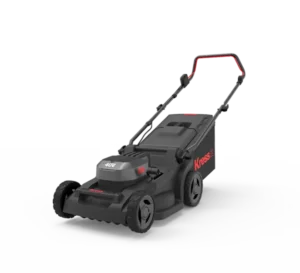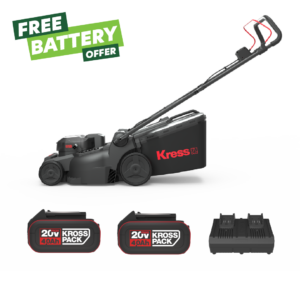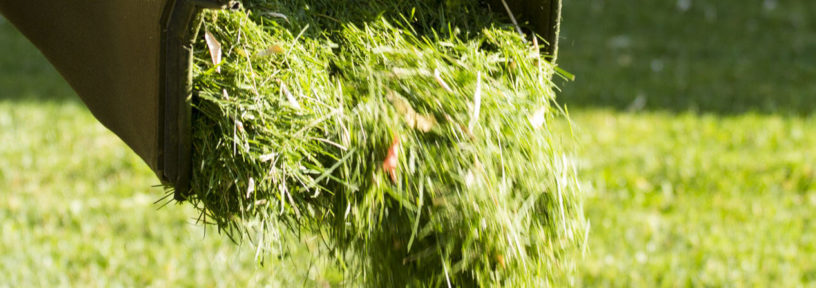There are two trains of thought when it comes to lawn clippings – either leave them on the lawn to return to the soil or take them right away. But which is truly the right option?
A natural lawn generates oxygen for us to breath and it creates a cool surface to sit or play on. It also produces lots and lots of clippings over the course of a year. What is the best way to deal with lawn clippings?
The case for leaving lawn clippings on the lawn
Some people like to let clippings fall back onto the lawn. The dead plant material is pulled into the soil and broken down by minibeasts and microbes to make plant food. It’s recycling just as nature intended.
Returning clippings to the lawn only really works well if you are only cutting a very little bit of the grass blade off – and if the grass is relatively dry.
I remember sitting in a classroom watching a tractor and gang mowers cut the school playing field. It smelled divine but it did leave a lot of debris behind. Huge clumps of clippings and if the weather was wet, it would be huge soggy lumps that congealed and gradually turned brown leaving dead patches on the surface of the grass. On grass cutting day, the boys couldn’t wait for play time so they could run outside and throw grass at each other.
That was OK for a primary school field. It wouldn’t work on a stadium or on an ornamental lawn.

On a garden lawn, it’s really for you to use your discretion. There’s a rhyme to remember here “If it’s dry, let them fly” . In other words, short dry clippings on a hot day won’t do any harm if you let them fall onto the lawn. In fact some say they help to conserve moisture. If the grass is long or wet (or both) it’s better to remove the clippings. Either rake them up after mowing (good exercise!) or pop the grass box on the mower.
 |
 |
 |
 |
 |
 |
Reasons to remove grass clippings
We’ve already touched on the aesthetics of leaving grass clippings on the lawn – great clumps are unattractive and they will leave discoloured patches.
How about the health of the lawn? Too much dead matter in the bottom of the sward can build up a layer of thatch. Thatch slows down drainage, making it harder for rainwater to soak through to where the roots need it. Thatch can also harbour diseases such as Fusarium patch. That’s why professional greenkeepers scarify their pitches, greens and stadia at least once a year…it’s to remove thatch.
By removing clippings you will slow down (but never stop) the formation of the thatch layer. Your lawn will look neater and your shoes will stay cleaner when you walk across the lawn.
BUT
What should you do with the clippings you remove?
I use lawn clippings to line the bottom of my chicken pen. It’s a good sized pen and the “girls” get very excited when the mower comes out of the shed. They know they’re about to receive a big pile of stuff to scratch in.
Some of the clippings go on the compost heap. I tend to alternate layers of grass clippings with layers of weeds, kitchen waste or chicken muck. It helps the compost to heat up quickly and rot down fast. However I do find I need to turn the heap on a weekly basis to avoid having a stinking slimy heap of yukkiness.
In the past, I have tried to use grass clippings as a mulch around fruit bushes. That didn’t go too well for me. I suspect I tried to make the layers too thick too soon and ended up with a dried up brown crust that water couldn’t penetrate. Other garden writers though seem to have been successful with the technique.
My daughter has a postage stamp of a lawn. She puts clippings into her brown bin for the council to take away and turn into green waste.
To summarise
Whether you leave clippings on the lawn or choose to remove them is entirely up to you. Provided you don’t leave huge clumps of grass on the surface and your lawn is fed and mown regularly, your lawn really won’t mind.
Lawn expert David Hedges-Gower suggests a mowing regime where you mow twice a week. Once with the box on, once with the box off. That way your lawn gets the best of both regimes. Some of those precious nutrients get returned to the soil but at the same time, the lawn is not overwhelmed with cuttings.

 Britain’s best lawn – How to get the look
Britain’s best lawn – How to get the look 

